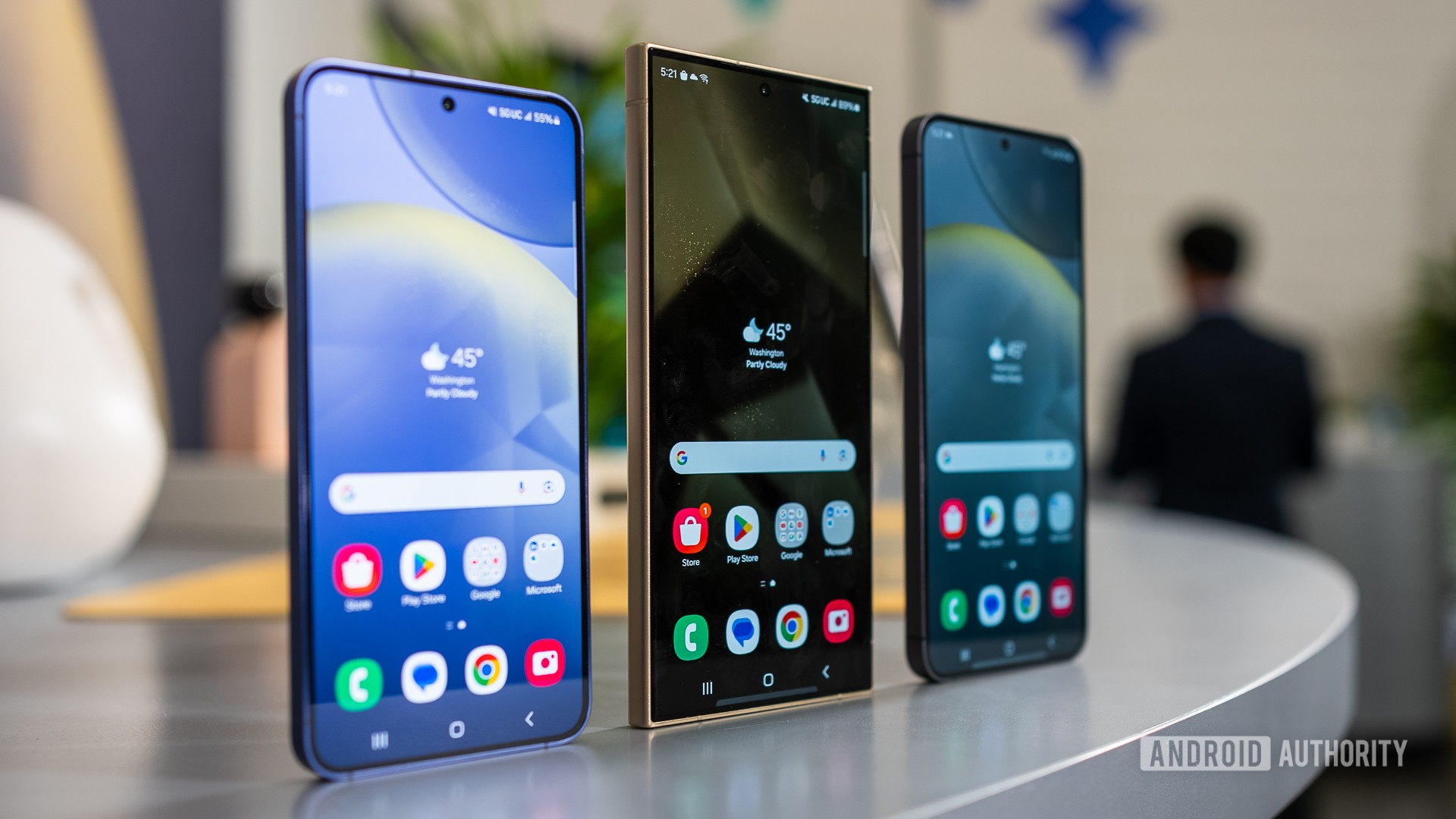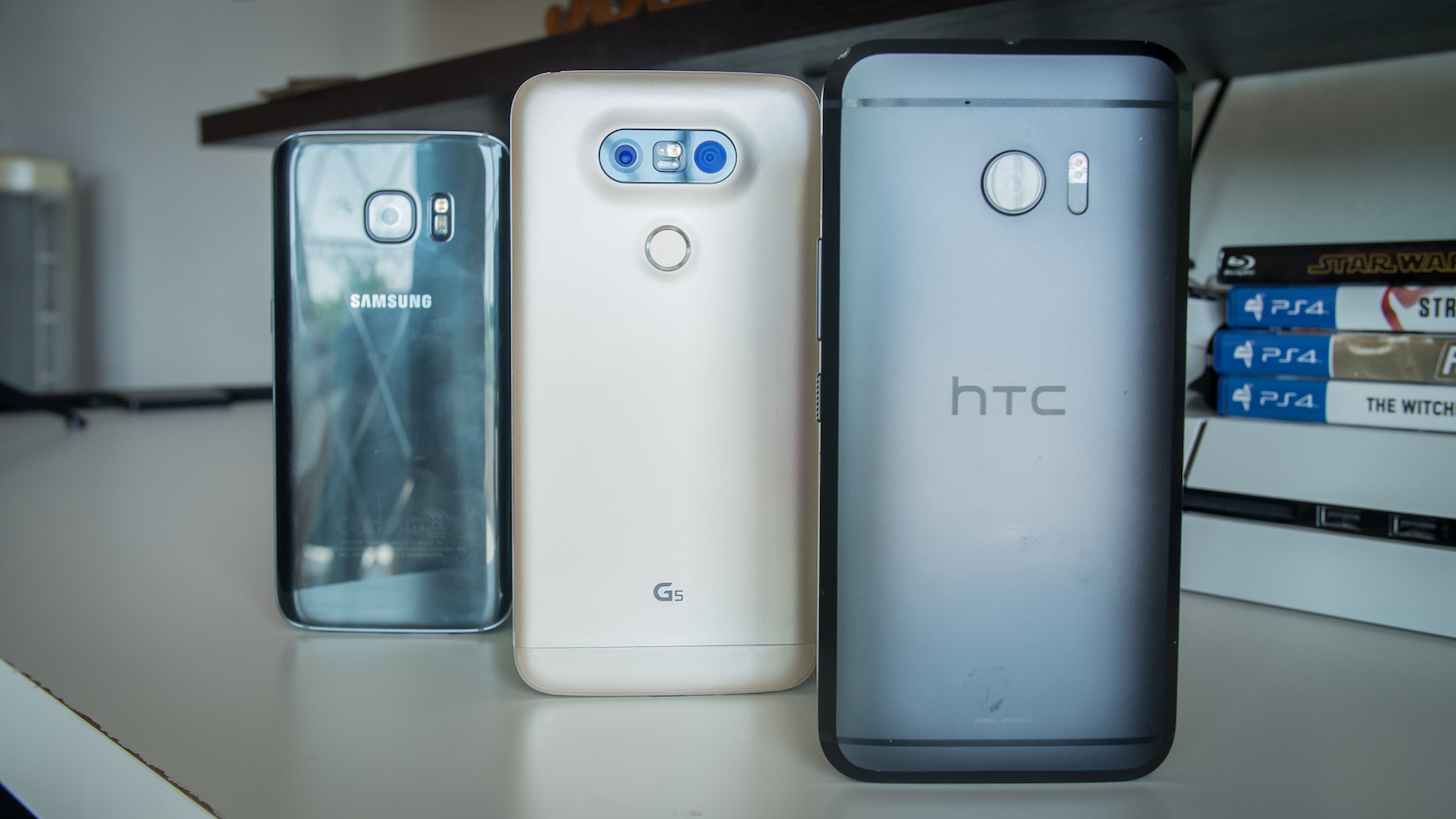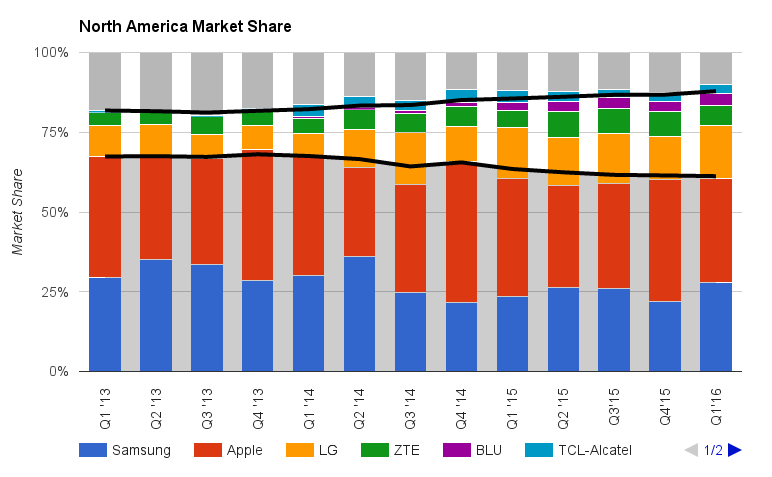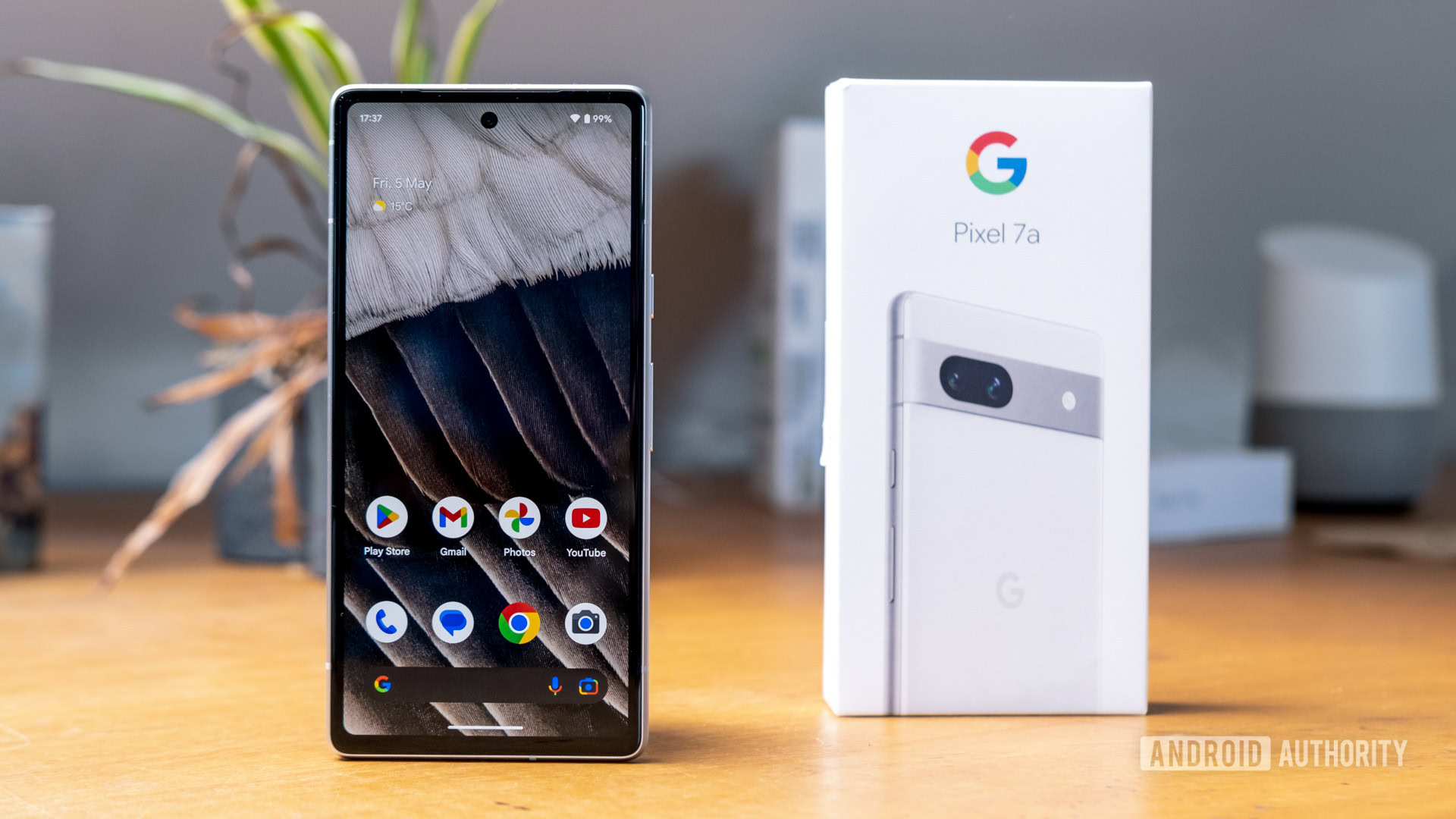Affiliate links on Android Authority may earn us a commission. Learn more.
Aren't flagship phones just status symbols?

When you think about it, $700 or more is an awful lot to spend on a flagship phone. That amount is verging on a nice little vacation, or a deposit on a car. For this money, not only do consumers expect top of the line hardware, but also the best consumer experience and association with a superior brand. That Apple logo or Samsung curved display is a little nod to friends and strangers alike that not only do you have good taste in tech, but that you have the cash to stay on the cutting edge. But are these devices really deserving of this prestige, and should we be buying our smartphones based on this perceived value?

Closing the hardware gap
If you’re prone to immediately adopting a skeptical approach to spending money (I am an avid tech penny pincher, myself), then you may have already come to the realization that flagship smartphones are overkill for most people’s smartphone requirements. Wasting a few minutes on Facebook or Candy Crush, composing emails, and even taking phone calls perform identically on a $400 phone as they do on an $800 one. You can even find reasonably priced phones with a decent camera and a fingerprint scanner these days, or pick up a last generation flagship model at a big discount just 12 or 18 months after release. For example, I saw Sprint’s Galaxy S6 for just $380 on Amazon the other day!
| Galaxy S7 edge | LG V20 | OnePlus 3T | Axon 7 | Moto Z Play | |
|---|---|---|---|---|---|
Display | Galaxy S7 edge 5.5-inch QHD, curved | LG V20 5/7-inch QHD + 2.1 ticker | OnePlus 3T 5.5-inch 1080p | Axon 7 5.5-inch QHD | Moto Z Play 5.5-inch 1080p |
SoC | Galaxy S7 edge Snapdragon 820 / Exynos 8890 | LG V20 Snapdragon 820 | OnePlus 3T Snapdragon 821 | Axon 7 Snapdragon 820 | Moto Z Play Snapdragon 625 |
Memory | Galaxy S7 edge 4GB RAM / 32GB ROM | LG V20 4GB RAM / 32GB ROM | OnePlus 3T 6GB RAM / 64GB ROM | Axon 7 4GB RAM / 64 ROM | Moto Z Play 3GB RAM/ 32GB ROM |
Cameras | Galaxy S7 edge 12MP rear with PDAF & OIS 5MP front | LG V20 Dual 16MP+8MP rear with laser AF & OIS 5MP front | OnePlus 3T 16MP rear with EIS & OIS 16MP front | Axon 7 20MP rear with PDAF & OIS, 8MP front | Moto Z Play 16MP rear with PD and laser AF 5MP front |
Extras | Galaxy S7 edge Fingerprint scanner, IP68, fast wireless charging | LG V20 Fingerprint, USB Type-C, HiFi DAC, Quick Charge 3.0 | OnePlus 3T USB Type-C, Fingerprint scanner, Dash charge | Axon 7 Fingerprint scanner, USB Type-C, HiFi DAC, Quick Charge 3.0 | Moto Z Play Fingerprint scanner, USB Type-C, Moto Mods |
Launch Price | Galaxy S7 edge $769 | LG V20 $799 | OnePlus 3T $439 | Axon 7 $399 | Moto Z Play $449 |
Raw performance hasn’t been a major differentiator for flagships for a couple of generations now, although the benchmarking crowd might tell you otherwise. Instead, it’s all about the extras and smaller features that keep these models out in front. LG and Motorola have tried to force a major differentiator with modular designs this year, while Apple, Google, and Samsung have refined their camera technology and software, and added in waterproofing. The Note 7 even went one step further with iris scanning technology, and Samsung is the only company to be sticking with wireless charging out of the box. If you want the absolute latest and greatest bits of tech, these are always going to appear in flagships first, with a premium price attached. The fact of the matter is, these features are far from essential.
Flagship phones are Ferraris for internet/social enthusiasts. They're not just about the hardware under the hood, but the build, style, and the branding too. Prioritizing form over function is a pretty good definition of a status symbol.
Consumer experience is also something to keep in mind, an area in which Apple particularly excels. iOS software fans never tire of saying “it just works”. Then there’s the look and build materials that have inspired a number of Android handsets to follow suit. Not to mention the purchasing experience too. Apple stores are full of electronics that you can play around with, rather than dummy models, and in-store support is the best in the industry.
Google’s new Pixel line-up is targeting a very similar angle. The phone is built to look and feel expensive, and the handsets were lauded for the way that the software came together into a unified experience. Although the Pixel XL is equally derided by some for being far too overpriced based on the hardware it offers. Ironically enough, even OnePlus’ low cost, high performance phones are often bought by those wishing to send out a status signal of their own, namely that of the no frills performance enthusiast or underdog supporter.
To make a questionable analogy, wealthy buyers stump up seemingly insane amounts of cash for a Porsche or Ferrari that’s capped at the same 60mph road speed limit as a Ford Mondeo as a means of showing status. When you compare phones to other luxury items likes cars or clothing, $700 doesn’t seem like such a bad deal to actual own the very best of something, especially if you use it every day. Although spending extra money on form over functionality is a pretty good description of a status symbol.

Will we ever fall out of love with flagships?
While there remain some very good reasons for buying a flagship smartphone, this year more than any other has revealed the industry’s struggle for meaningful innovation. Bar the small improvements to hardware components or the more desperate attempts at forcing modularity, the core experience of the iPhone, Galaxy S series, the HTC10, and others remains unchanged from last year. While these phones might be worth the cost if you’re coming from nothing or a really old model, $700+ for marginal upgrades really isn’t worth it every year.
If we want to be really cynical, is Samsung's edge display much more than an exercise in building brand recognition?
If we want to be really cynical about innovation, how much of a real game changer is Samsung’s edge display anyway? It’s unique looking for sure, but it’s probably more of a status identifier along the lines of the Apple logo than it is about introducing genuinely useful functionality. The same could be said for upcoming DayDream phones. Is virtual reality actually going to be a major force in the smartphone market, or just a gimmick to be trotted out occasionally just to prove that your expensive phone can do it? I guess we’ll see.
If we trawl through some actual market data, we can see that market share for Apple and Samsung, by far the largest premium brands, has gradually been receding to lower cost manufacturers in the US. While we can’t draw any definitive conclusions from this data, it’s quite likely that customers are sticking with their older capable older flagships for longer these days. A 2 or 3 year update cycle is much friendlier on the wallet.

However, the data equally suggests that there’s still a huge market for premium products, with Apple’s line-up firmly holding the majority of the market share in the US. Furthermore, just look at the consumer disappointment created by the Galaxy Note 7 recall. I doubt people would have been as upset if it was the Galaxy A series that suffered the same problem.
Interestingly enough, the smartphone brands that have successfully cultivated a strong premium brand followings are the only companies managing to maintain flagship sales momentum in this competitive industry. It’s not underperforming hardware that has knocked HTCand Sony from their previously high flying positions. I’d wager their downfall has a lot more to do with people simply recognizing other brands as signs of superior quality, which is all down to marketing. Something that Apple, Samsung, and now Google are rather good at.

Wrapping up
High-end, status symbol smartphones certainly don’t look to be going anywhere. In fact, we’re probably looking at a situation where high-end brands increasingly focus on the prestige factor as a product differentiator. With mid and “super-mid” range smartphones closing the gap on flagships in terms of performance and features faster and faster each year, thanks to the falling costs of technology, going above and beyond just hardware is going to be increasingly important to keep customers forking over cash at these high price points.
What do you think about flagship phones these days? Are they worth the money for their hardware alone, or are they just as much of a fashion statement?